Here at 20|20, we work with a lot video. What better way to tell a story passionately and succinctly? While the final product is impressive, a lot goes into the storyboarding, planning and execution. This week, I thought I’d give you all a peek behind the scenes to learn what goes into a commercial shoot.
Recently, we were asked to develop a commercial for Clovis Community Medical Center in the Central Valley to extol the benefits of the hospital’s new expansion efforts. Here’s how a commercial comes together from our point of view:
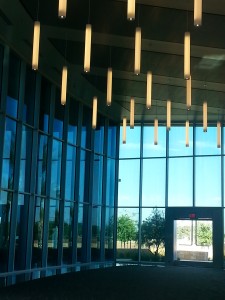
We storyboarded expansive shots like this, showing the scale of Clovis’ new buildings.
- Writing and Storyboarding- Most commercials we develop start with a concept we flesh out in possible voice over and visuals. Alec and I developed a script for this particular campaign, and Meg paired the copy with animated visuals that illustrated our vision for the spot. So much is determined at this phase- from the tone of our background music to the lighting and photography style we’re after.
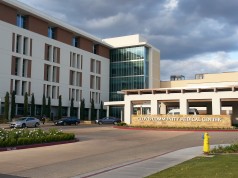
Scouting a few exterior shots at the hospital.
2. Scouting- After concept approval, we take our photography team on location to scout where we’ll be shooting. We work together to refine our shot list and anticipate any challenges when it comes to the actual shoot.
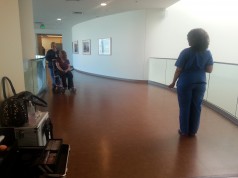
Staging a shot with a few of our models.
3. Casting- This particular spot required some casting for certain parts. I partnered with a local agency to find actors and models that didn’t just look good, they represented the right cross-section of the community. We also casted the voice over actor who would narrate the spot with the right tone and inflection consistent with our campaign.
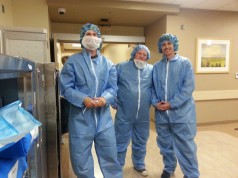
Scheduling time in the da Vinci surgical suite was though, but worth it. Here, our team is ready to shoot.
4. Scheduling- This part can be the biggest hurdle in the process, and it happens to be my favorite step! On this occasion, we had to find a way to balance our ambitious shot list with the availability of a busy Central Valley hospital in the midst of caring for hundreds of patients. Partnering with our clients is key here, and we were able to find openings with certain departments and staff that allowed us to gather what we needed.
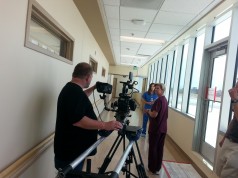
We turned an ordinary hallway into a film set with the help of a few nurses.
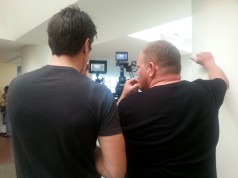
Alec and our videographer Barry putting their heads together.
6. Editing- Once the film is in the can, we begin editing the footage with our videographer. This is the convergence of our score, our recorded voice over and our visuals. With a meticulous storyboard, we have a firm foundation, but we always look for moments of inspiration and variation that perhaps we hadn’t considered.
The whole process is thrilling to see from start to finish: from a small idea spouted during a brainstorming session, to a production in full swing. I have to say, this is one of my favorite parts of the job!
Robyn